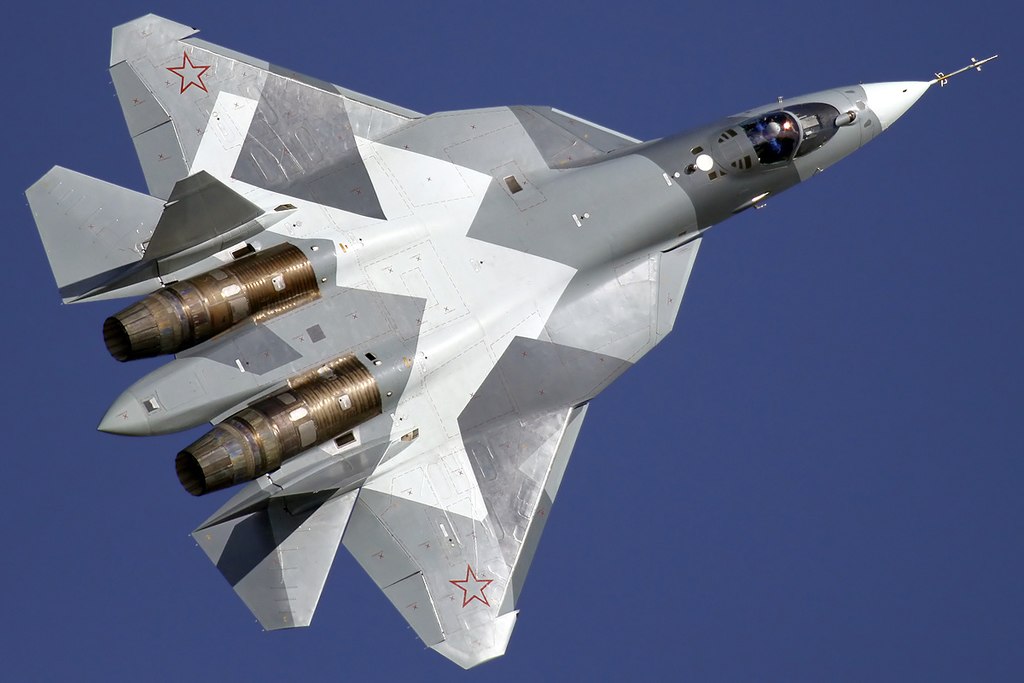How India could effectively bridge IAF's 5th Gen Capabilities Gap in Fighters with China & Pakistan for Interim without Long-Term Commitment
Operating with just 31 fighter squadrons, against the originally sanctioned fleet strength of 42 squadrons to counter a two-front simultaneous threat, the IAF faces a major quantitative gap in fighter jets vis-a-vis it's hostile neighbours & arch rivals, namely, China & Pakistan. Further, the former even is leading qualitativey with a clear overmatch having developed two 5th gen stealth fighters, in form of the J-20 and the J-35, while also testing even a futuristic J-36 6th gen bomber.


Operating with just 31 fighter squadrons, against the originally sanctioned fleet strength of 42 squadrons to counter a two-front simultaneous threat, the IAF faces a major quantitative gap in fighter jets vis-a-vis it's hostile neighbours & arch rivals, namely, China & Pakistan. Further, the former even is leading qualitativey with a clear overmatch having developed two 5th gen stealth fighters, in form of the J-20 and the J-35, while also testing even a futuristic J-36 6th gen bomber. Pakistan, on the contrary, is procuring the J-35s from China while also collaborating with Turkey on the Kaan 5th gen fighter program which, thus, is going to ensure that Pakistan will have an in-service 5th gen fighter by the end of the current decade.
India, in response, is banking on its indigenous AMCA program to counter them in a dangerous neighbourhood soon- to-be dominated by 5th gen fighter capability. However, with the earliest EIS timeline of 2035, the AMCA is going to be at least half-a-decade behind its immediate requirement with the IAF. The most obvious solution to India's urgent & truly pressing need for a 5th gen capability seems to import a couplle of squadrons of either the F-35 or the Su-57 while the AMCA is developed. However, that's only going to place additional import burden on India which could, otherwise, instead be used judiciously for the procurement of additional units of Tejas and AMCAs going forward and the development of 6th gen tech & capabilities alongside.
What India could instead do is to lease a couple of squadrons of the Su-57, at least for a decade, till the AMCAs are produced & inducted by the IAF in sufficient numbers. Leasing of defence equipment, especially fighter jets, is a usual practice globally with many nations having exercised the option in the past. For instance, Czech Republic leased 12 JAS-39 Gripen fighters for a decade from Saab in 2005 which was subsequently extended for another 12 years in 2015 and has now been extended until 2035, till the latest F-35s are delivered by the U.S., with the Czechs doling out $790 million for the extension, including, maintenance & pilot training. That way, the Czechs have effectively bypassed the burden of an interim fighter procurement and move straightaway to a 5th gen fighter capability amid a rapidly deteriorating security environment in Europe with the resurgence of Russian military threat. India could, thus, similarly, lease a couple of squadrons of the Su-57 for a decade to effectively deter China and Pakistan before the AMCA goes online & becomes available to the IAF. In the past, India, too, had leased a pair of MQ-9B Sea Guardian UAVs from General Atomics in 2020 and operated them for 4 years for maritime patrol before settling down on to a decision to buy around 31 of them last year.
The move would:
Save India a sizeable amount of money required to foot the burden and bill of an interim, 5th gen fighter import, which could be effectively avoided and used judiciously otherwise, while also effectively being able to deter China & Pakistan.
Bridge the relative & rapidly widening 5th gen capability gap with China quickly and in the most optimum & least risk manner without psychologically leaving the IAF devoid of it for the prolonged period of a decade
Provide IAF pilots & maintainers with the invaluable experience of operating and maintaining a 5th gen fighter platform, especially the development of pilot training & A/C deployment plans, usage doctrine based on capabilities and maintaining the stealth coatings part etc.
It would further strengthen India-Russia strategic ties without taking India further deeper into the Russian orbit for the long term.
A lease deal, unlike buy, is also likely to keep Trump and the U.S. at ease geopolitically (with Trump having already pitched the F-35 to India); while securing India's overall strategic interests and also being in alignment with India's strategic autonomy in foreign policy and 'Make in India' policies for defence; given the credible China-Pakistan twin threat scenario for India which is duly acknowledged even by the U.S.
India could effectively leverage Putin's current eagerness (read almost desperation) and urgent need to pursue international defence exports as a bulwark against and to partially offset economic sanctions imposed by the U.S. and also to effectively support the Russian economy which is rapidly being reoriented & restructured around defence as the core pivot especially in the wake of Ukraine War. Also, Russia desperately needs an international customer to push exports of the Su-57. India could effectively harness the great Putin-Modi chemistry & rapport to strike a deal, on terms most suitable to India, with even a potential payment in the Indian Rupee, highly likely to be acceptable to Russia which could save precious FOREX for India.
Steve Jobs had once said, "When you first start off trying to solve a problem, the first solutions you come up with are very complex, and most people stop there. But if you keep going, and live with the problem and peel more layers of the onion off, you can often times arrive at some very elegant and simple solutions." Albert Einstein, too, had said, "When the solution is simple, God is answering". Could it be the 'Eureka Effect' at play and potentially Indian defense's 'Aha' moment...
However, the aircraft availability, given the low production rate of the Su-57 at 12-15 aircraft at present which is slated to go up to 20 over near term, remains the biggest concern and impediment going forward.
For more, explore our A&D books on Amazon at:-
Image Credits: Author: Dmitry Zherdin, Usage Terms: CC BY-SA 3.0


